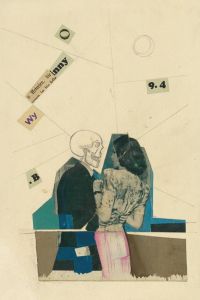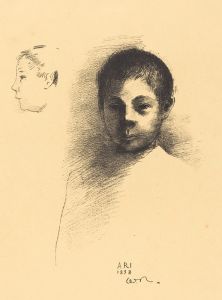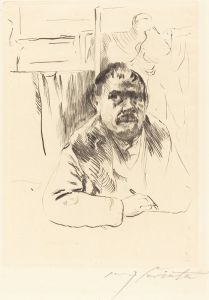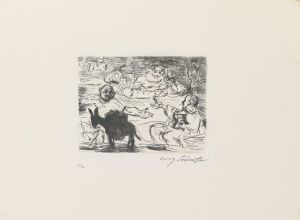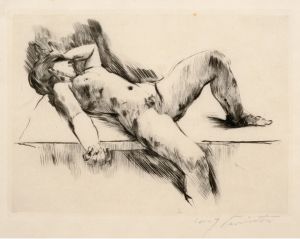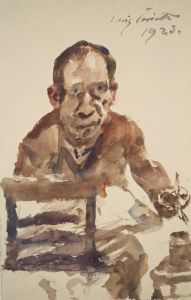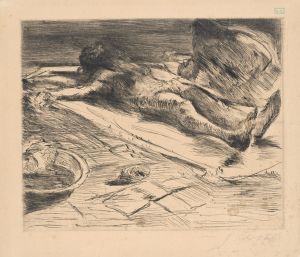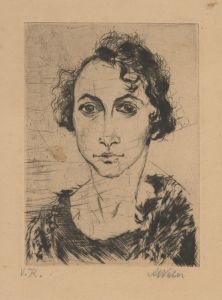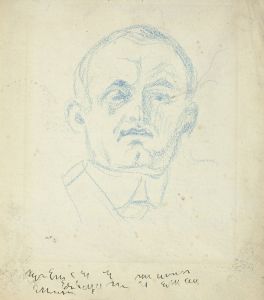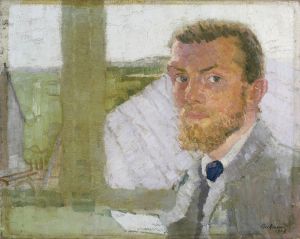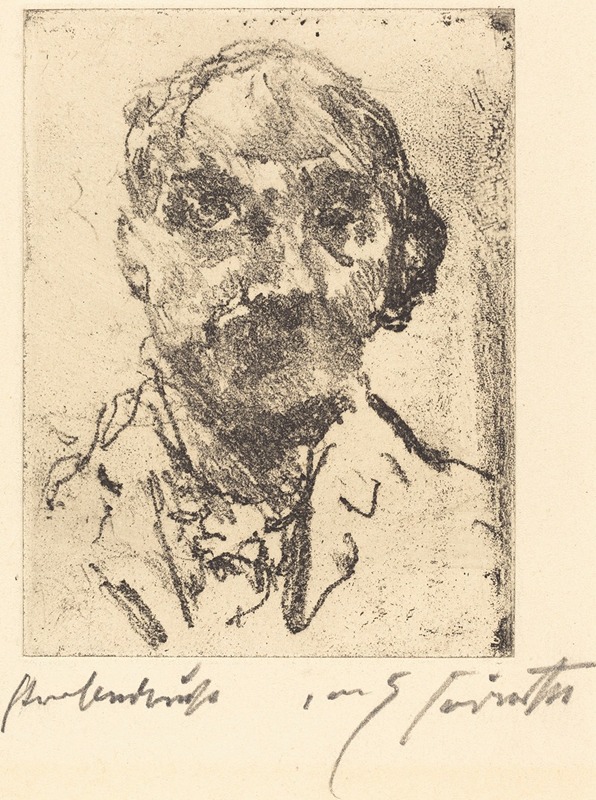
Self-Portrait
A hand-painted replica of Lovis Corinth’s masterpiece Self-Portrait, meticulously crafted by professional artists to capture the true essence of the original. Each piece is created with museum-quality canvas and rare mineral pigments, carefully painted by experienced artists with delicate brushstrokes and rich, layered colors to perfectly recreate the texture of the original artwork. Unlike machine-printed reproductions, this hand-painted version brings the painting to life, infused with the artist’s emotions and skill in every stroke. Whether for personal collection or home decoration, it instantly elevates the artistic atmosphere of any space.
Lovis Corinth was a prominent German painter and printmaker whose work bridged the transition from Impressionism to Expressionism in the late 19th and early 20th centuries. Among his extensive oeuvre, Corinth is well-known for his self-portraits, which offer a profound insight into his artistic evolution and personal life. One of his notable self-portraits is "Self-Portrait with Skeleton," painted in 1896. This work is often highlighted for its psychological depth and technical mastery.
Corinth was born on July 21, 1858, in Tapiau, East Prussia, now Gvardeysk, Russia. He studied at the Academy of Fine Arts in Munich and later in Paris, where he was influenced by the works of the Impressionists. His early works were characterized by a naturalistic style, but over time, his art evolved to incorporate more expressive and dynamic elements.
"Self-Portrait with Skeleton" is a significant work in Corinth's career, reflecting his interest in themes of mortality and the human condition. The painting depicts Corinth standing beside a skeleton, a traditional symbol of death. This juxtaposition can be interpreted as a memento mori, a reminder of the inevitability of death, which was a common theme in art history. The self-portrait is notable for its bold brushwork and the intense gaze of the artist, which conveys a sense of introspection and confrontation with his own mortality.
The painting was created during a period when Corinth was exploring the boundaries of realism and expressionism. His use of color and light in this self-portrait demonstrates his mastery of technique and his ability to convey complex emotional states. The work is also indicative of Corinth's interest in the human form and his skill in rendering it with both anatomical precision and expressive distortion.
Throughout his career, Corinth produced numerous self-portraits, each reflecting different aspects of his personality and artistic concerns. These works are considered an essential part of his legacy, providing insight into his development as an artist and his engagement with the themes of identity and self-reflection.
In addition to his self-portraits, Corinth was a prolific painter of landscapes, portraits, and historical scenes. He became a leading figure in the Berlin Secession, an art movement that sought to challenge the conservative art establishment in Germany. His later works, particularly those created after a stroke in 1911, are characterized by a more expressive style, with looser brushwork and a heightened emotional intensity.
Lovis Corinth's contribution to modern art is significant, as he played a crucial role in the transition from traditional to modernist approaches in painting. His self-portraits, including "Self-Portrait with Skeleton," remain important works for their technical skill and their exploration of universal themes. Corinth continued to paint until his death on July 17, 1925, leaving behind a rich legacy that continues to be studied and appreciated by art historians and enthusiasts alike.





